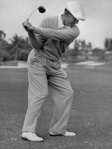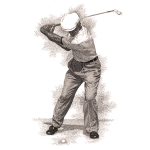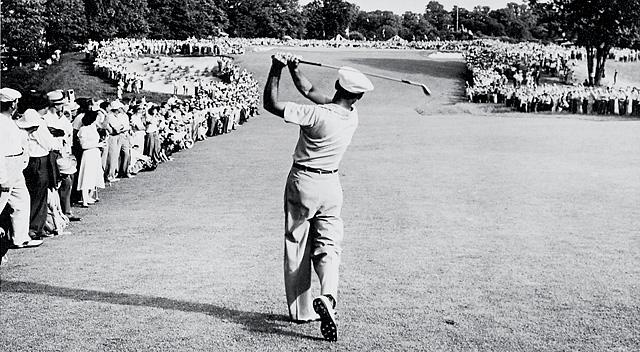Better Swinging in a Pinch – Ben Hogan’s Priceless Piece of Advice
Here’s an obscure little known fact about the role the forefinger and thumb play in helping or hindering your golf swing. Aparently – the adage “You grip the club with your fingers” means you really only use your middle, third and pinky fingers and leave that forefinger alone – it activates the wrong muscles in your forearms and most likely contributes to swing outside-in.
Go ahead try it at home – swing while leaving your forefingers and thumb loose (but actually pressed where they meet at the base of the hand so they still form the upside down V – so your thumb sticks away from your hand and your fore-finger is kind crooked – it’s hard to explain – so i suggest binging or googling “ben hogan tips about thumb and forefinger.”)
there’s something to this. excerpts from one online search entry below
Ping_SVGolfer
Say – and BTW – who knew that he was such a short guy. Only 5’7″ but he had really long arms (like 37″ instead of regular 34/35″) – so his swing plane was very unique because swing plane is correlated to the golfer’s height and arm length (and center of gravity). typically the taller you are or shorter your arms the more vertical your plane (aah – can you say Bubba!). the short you are or the longer your arms – the more the ball needs to be away from you – the flatter your swing plane – think Oosthuizen. Kinda makes sense. But like all rules – I’m sure “salt and pepper to taste” OR “your-mileage may vary” applies.
As instruction manuals go, Ben Hogan’s Five Lessons: The Modern Fundamentals of Golf is a classic. It’s also somewhat complicated. Between discussions of swing plane, supination, and pronation, there’s plenty to challenge even the most serious student of the game. But one of the best tips in the book-an anti-slice measure-is also one of the simplest, and oddly enough, one of the most obscure. It concerns the actions of the right thumb.
On page 24, Hogan writes: “If you work [pinch] the tips of the thumb and forefinger together and apply any considerable amount of pressure, you automatically activate those muscles that run along the outside of the right arm and elbow to the right shoulder. These are not the muscles you want to use in the golf swing.”
Grab a club and see what a difference this added tension makes. First, grip the club with your right thumb and forefinger pinching the shaft. Feel how it engages the right shoulder? Make a swing, and with the right shoulder activated you’ll tend to swing from out to in. Now, relax the right thumb and forefinger. Notice how the entire right arm relaxes, making it much easier to swing straight through along the target line.



